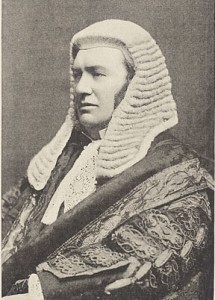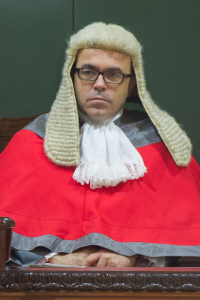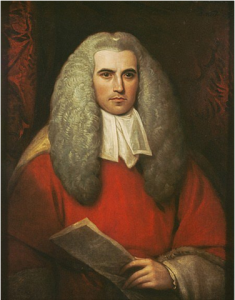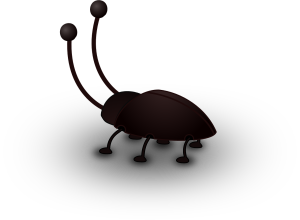
British judges and their love affair with judicial wigs
It ’s always been a paradox to me: Why do members of two of the most respected professions – the clergy and the judiciary – have such an absurd dress code? Even the men perform their duties wearing a floor-length dress.
I scratch my head even more over “court dress” in the United Kingdom. Judges and barristers there go beyond one step further and don wigs. These judicial wigs are not fashionable toupees to cover a bald head. A British high court judge wears a full bottomed wig that makes him or her look, if not like the comic hero Underdog, at least like a beagle.

So why do judges routinely plunk down a thousand pounds or more to buy wigs of woven horsehair just to spruce up their noggins? It’s all history and tradition, respect and recognition, dignity and decorum.
Insects infest the judicial wigs in 19th century India

It should come as no surprise, then, that the first Chief Justice of the Supreme Court in Madras, India, insisted the justices there wear the wigs they knew back home in Great Britain. Sir Thomas Andrew Lumisden Strange (1756-1841) served as Chief Justice in Madras from 1800 to 1817 and had a bulk order of judicial wigs shipped in from England. But thanks to some six-legged critters, Strange’s judicial wig rule didn’t last very long.
On the way to India, reported the 1828 issue of The New Monthly Magazine, some of these creatures amused themselves by infesting the Chief Justice’s wig.

These cockroaches ate a large hole through the wig, so that one of Justice Strange’s ears poked out ridiculously when he put it on. While the rest of the court tried to suppress its laughter, Justice Strange readjusted his wig so his ear wouldn’t stick out. He had to pull it so far to the side that his other ear stuck out.
Sir Henry Gwillim, another justice known as an “irascible Welshman,” then donned his wig. An observer present that day in court, who recalled the court dress in Madras as “absurd” and “intolerable,” especially for the climate, noted that Sir Gwillim was the only justice who maintained composure in his horsehair crown.
Sir Benjamin Sullivan, a third justice, placed one of the judicial wigs on his head, only to discover that a bunch of these creatures had staked out the real estate first.

An immense host of mosquitoes had bedded down in the labyrinths of Sullivan’s wig. They began swarming and buzzing as soon as he put it on. Justice Sullivan “snatched it off in a sudden fit of indignation, and threw it, with an oath that was somewhat extra-judicial, into the middle of the court,” the observer wrote.
The two other justices followed suit and the wigs landed on a pile in the floor. It was one of those rare instances in which hilarity – and insects – briefly ruled the courtroom. The justices roared in laughter. The observer wrote that it took quite a while for the court to regain its composure. “No attempt was made to inflict the same nuisance on the barristers,” he wrote.

The story even made international news. A German criminal justice journal reported the incident.
As far as I know, that was the end of judicial wigs in India.
Would it be too much to hope that the rest of the world’s bewigged judiciary follow suit? But you will excuse me until next week, while I take the time to remove some of these from my bonnet.

Do you think British judges and barristers should wear judiciary wigs? Are the outdated? Or a worthy tradition? And do they make sense in a tropical climate?
Literature on point:
“Society in India, No. II,” New Monthly Magazine, Part 1. 327-340 (1828) [quotes]
“Die richterlichen Perücken,” Annalen der deutschen und ausländischen Criminal-Rechtspflege 159-160 (1828)




A wonderful article. And it reminds me of a running joke in our family that refers to the (fictional) memoirs of a 19th Century jurist – “Spiders in my wig” by Lewis Montague Dogmer QC
How funny, Antoine. If “Spiders in My Wig” was a real memoir, I’d put it on my reading list! I wonder how often judges had to put up with insects, but never wrote about it.
The “wigs” may have originally served to keep the judge’s head warm while sitting through long court sessions.
Thanks for the amusing article! Precedent can have its hang-ups.
I’ve always thought the wigs were a leftover from fashion trends gone by, but who knows — England’s weather may have played a role in shaping the fashions. But like any other organic material, horsehair can have its drawbacks and attract insects.
Glad to hear the article amused you, Rosemary, and thanks for commenting!
Your puzzlement over the traditional attire of clergy and judges seems to be, at the root of the matter, your hang up and not some deficiency of traditional fashion.
Do you ever wonder why women have convinced themselves that it’s okay to wear form-fitting Lycra yoga pants in public? They’re really wearing long underwear without proper trousers. It’s unfortunate in that no one looks good in these, despite what they may tell themselves.
That’s my hang up, but then it’s less about me thinking they’re ridiculous than it is about me thinking yoga pants are an eye sore that I wish I didn’t have to deal with. Clergy and judges attire doesn’t bother me much, but then I can choose to avoid them. It’s pretty hard to avoid women as a category.
Well, I used to be an American lawyer and am well-acquainted with American judicial attire. The British judicial wig is something of a head-scratcher for me, I gotta admit. Cockroaches, however, don’t give a hoot about fashion and their prolivity for the judicial wig is just the kind of thing to add some levity to the courtroom. Thanks for your thoughts, Beatrice.
The logic of British court attire is that it is *supposed* to hide the identity of the wearer to some extent, so they can safely go out in public without risk of attack.
Personally I think it’s just a case of extreme conservatism in dress; the outfits have barely changed since the 18th Century – indeed, in the case of judges, the 17th.
(Some people believe that wigs became fashionable originally as a way of concealing the short hair worn by some Cromwell/Parliament supporters. I very much doubt this is true.)
Thanks for providing that background, Brian. I wonder if any of the judges’ identities can be concealed by a wig, really, as long as the public can see their faces. And aren’t their names made public? But, as one of my law school professors used to say, a page of history is worth a volume of logic.
Let’s just hope that the modern wigs aren’t as attractive to six-legged creatures!
Funny stuff! Thanks AM.
Thanks, David! I’m glad you liked it.
I thought that the article was funny and I would have loved to see the courtroom that day! I think the wigs are very outdated, and I think they’re ridiculous in this day. I would definitely stop the wearing of wigs and very outdated clothing, although a judge’s robe is still important to distinguish the judge from everyone else.
Well, I won’t ask the Brits to stop wearing their wigs in court. It’s part of their culture. But wigs in the heat and humidity of India? I would habe thrown off my wig too, cockroaches or not. Thanks for commenting, Susan.